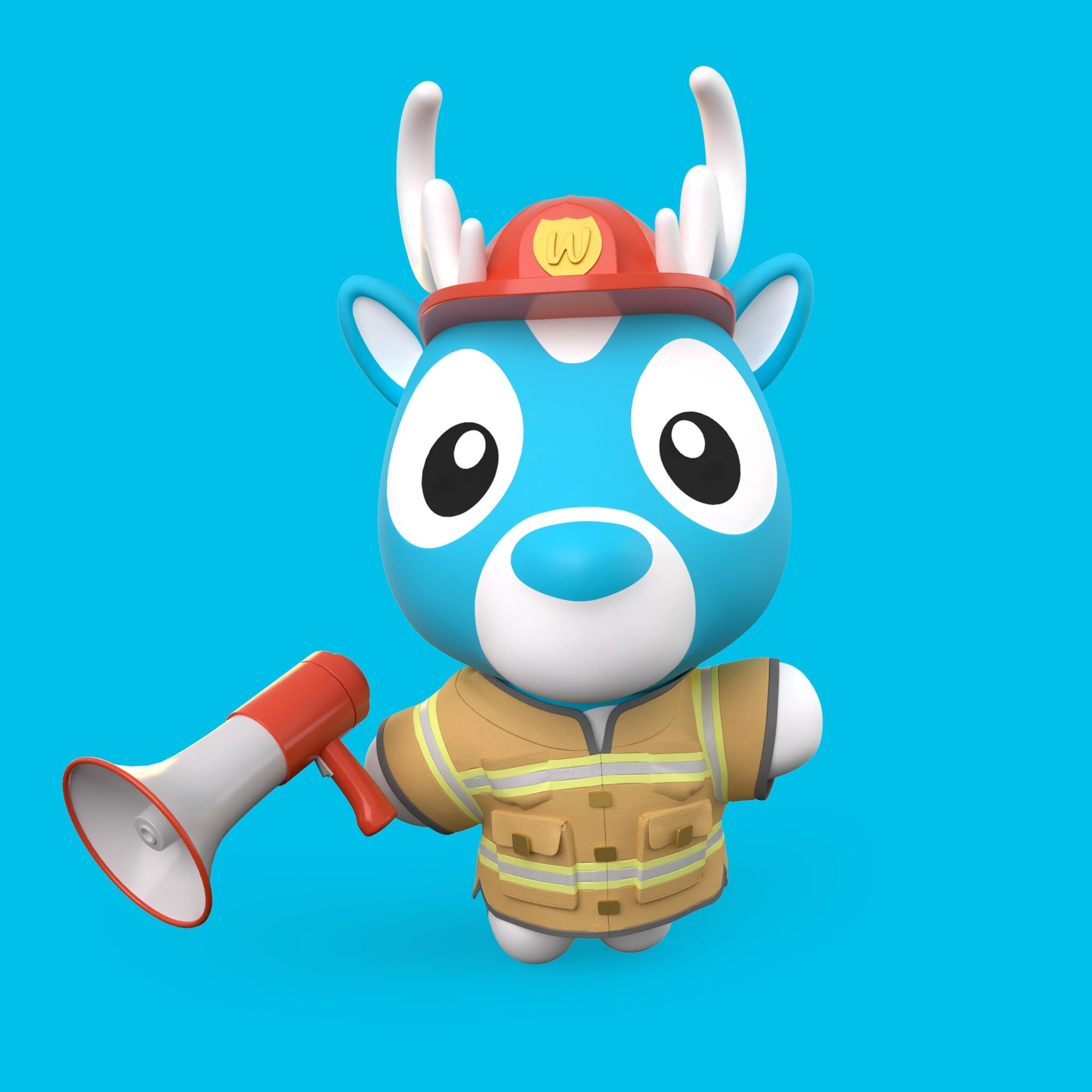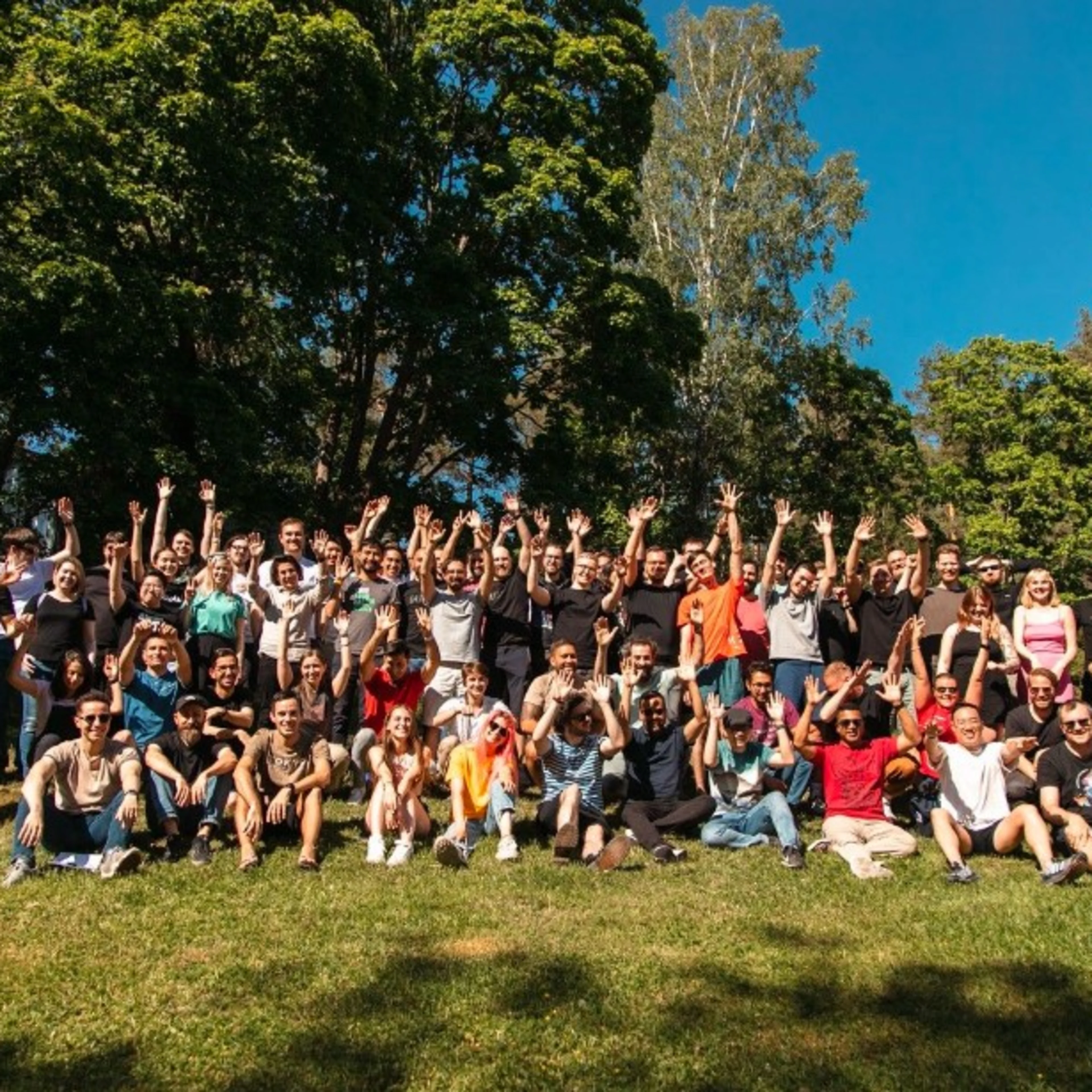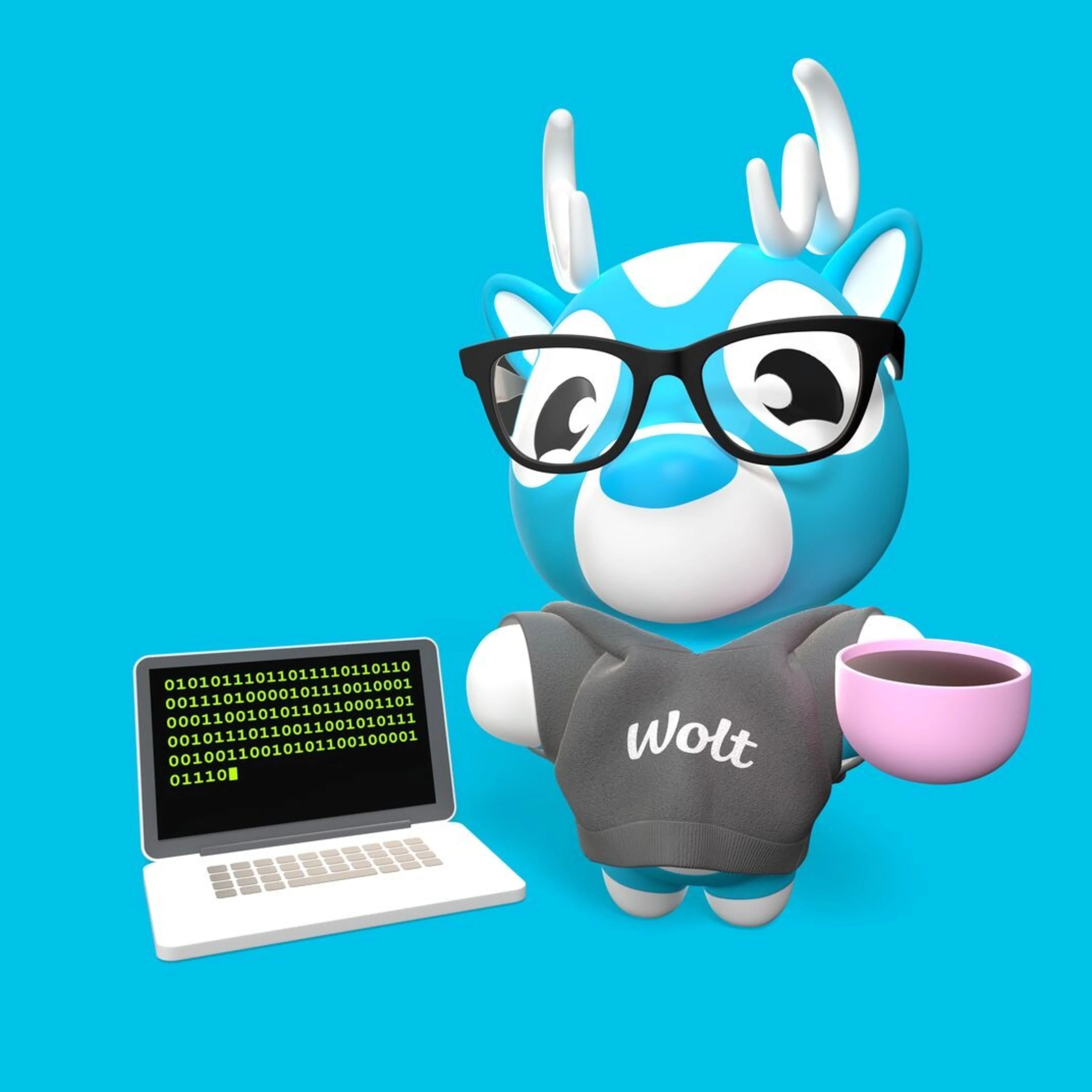Tech
Helena Anttila, Head of Technical Support
May 8, 2023
How to build happy and productive remote-first teams
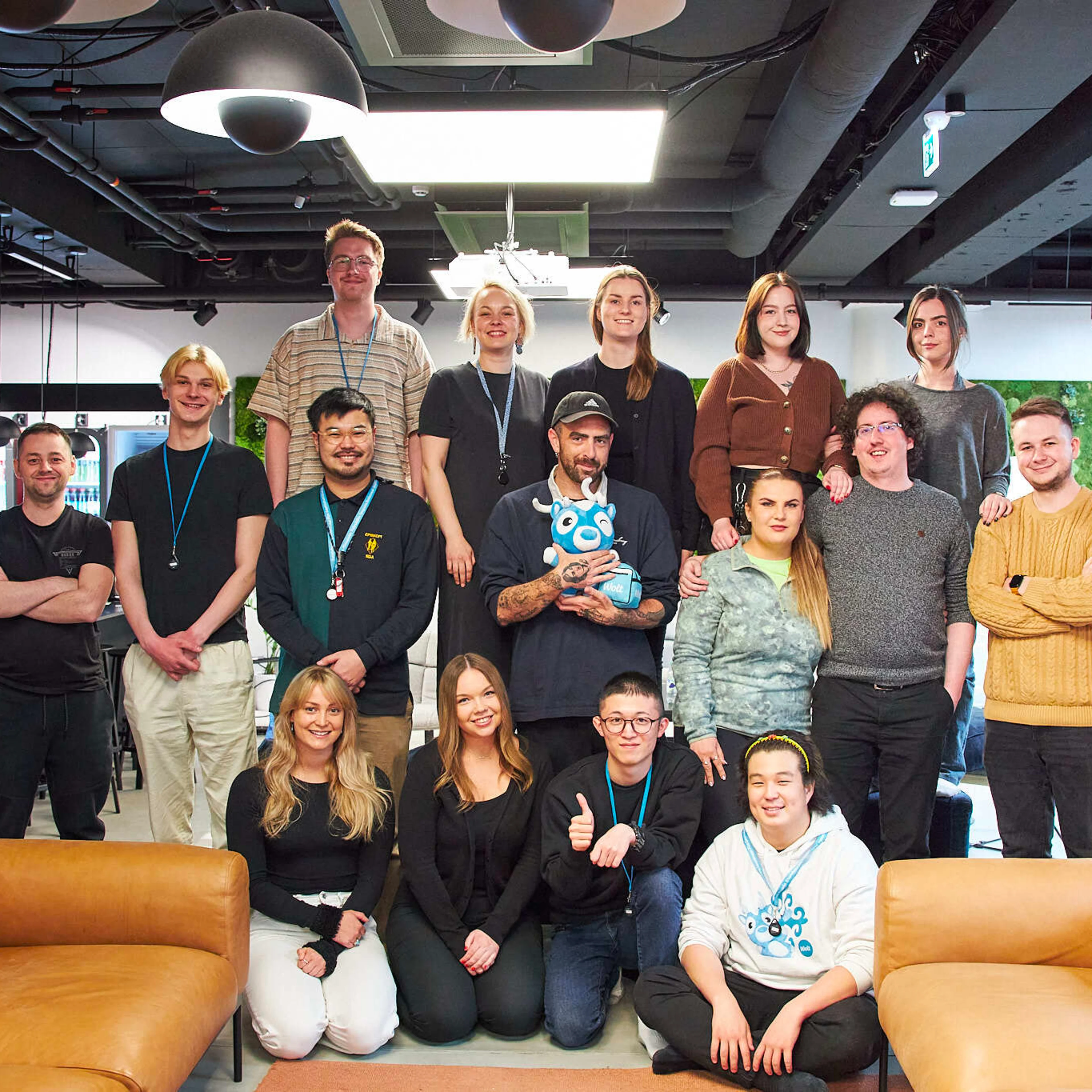
Hey there! 👋 I’m Helena, I’ve been at Wolt for five and a half years and I lead our Technical Support organization.
Our Technical Support team works to solidify the relationship between our Product Development and Operations teams. In practice, this means that we establish and develop processes to make product development at Wolt smooth while also solving support requests around debugging, access management, payment issues and remote device management, for example.
I also lead one of the happiest teams at Wolt. We’re remote-first and although we’ve built the team remotely, we’ve been able to maintain one of the highest team engagement, or happiness, scores when it comes to our engagement survey at Wolt. Remote work doesn’t need to mean lonely work and we create team cohesion with activities, wellness check-ins and small rituals that can make a big difference.
Like many global companies, Wolt never sleeps. Operating in 25 countries across EMEA and APAC comes with a need for round-the-clock support. As we operate all day and night and get requests from fellow employees 24/7, the team works in shifts. Currently we cover 3am-10pm EST, and we’re looking into the challenge of taking Tech Support 24/7 which is why we need highly distributed, remote-first teams.
Tech Support was originally meant to be a pilot for remote-first work at Wolt, but the pandemic accelerated things. Our approach to building the team has been remote-first from the get-go. During the pandemic the team has grown from three to 16 people, working together remotely across nine countries.
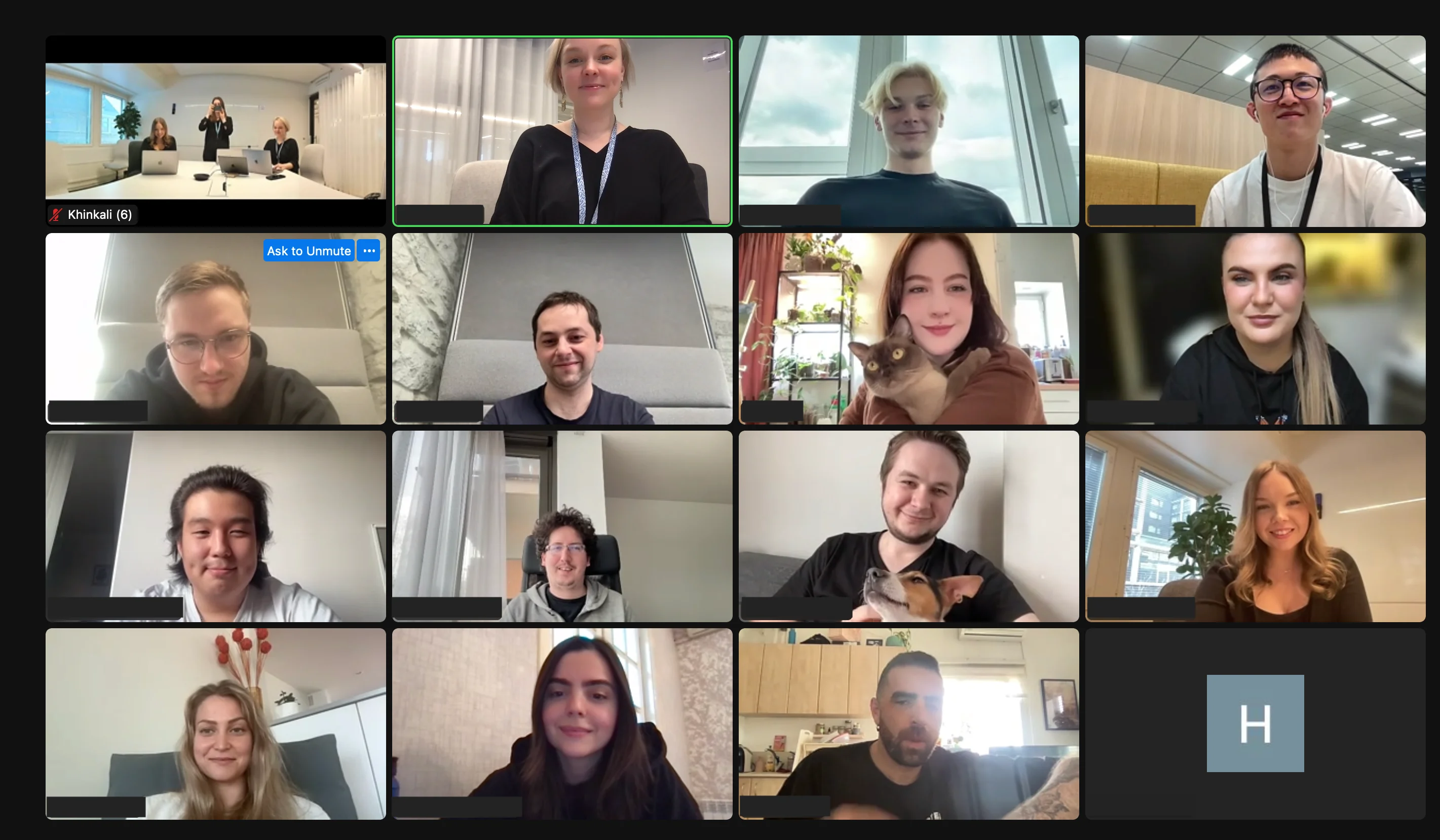
Tips for building a remote-first team culture
In this blog I want to share a few insights and learnings I’ve had from building a remote-first team. Maybe they’ll be helpful for you, who might be in the same spot, about to get started with building remote-first teams.
1. Customer comes first 💡
At Wolt, we focus on balancing the local with the global. While being a global company, we do a lot of work to localize our services, such as customer support, marketing, branding and… internal tech support. The brilliance of Wolt is that we’ve been able to scale into 25 different markets, some with very, very small teams, while keeping the local feel backed up by the benefits of a global business underpinning it.
To support our operating model, we’ve built the team with a strong focus on having coverage from a range of nationalities to understand the needs of our markets and speaking various languages to support different regions. Tech support provides internal support in Japanese, Russian, Hebrew, German and Finnish to mention just a few.
Localisation has also impacted how we’ve set up our ways of working.
Shift work enables the team to support Wolt nearly around the clock as our coverage is impcated by a couple of things: the bulk of the Wolt orders we receive and when majority our employees are working. As we’re based across Europe and as far away as Japan, we need to cover mostly European time zones, but also ensure there’s support for the regions in Asia too. We work in morning/afternoon/evening shifts to give coverage for all the areas needed and focus on providing a world-class support experience. For me, it’s extremely important to value Tech Support’s customers, our employees, just as highly as we value Wolt’s customers.
💡Some useful takeaways:
Identify your customer’s needs. This way you can plan your team’s workload to best support your customers
Build quality both externally and internally. Customer experience should be the top-level inside and out
2. Get the setup right 🧑💻
At Wolt, we’re big on accountability, freedom and autonomy and our product development teams can choose how they work: onsite, remote or a hybrid of the two. We trust our teams to take responsibility for their work and collaborate and connect as much as they need to whilst making sure they’re set up for success. For more check out our hybrid and remote working blog.
Effective remote working can only be done with an appropriate set up. This includes everything from ergonomics to managing workload and breaks.
In our product development organization we have the ability to order a work from home kit to make sure employees can work comfortably and ergonomically by having a proper desk, chair and hardware.
As we work remote-first, we have to find new ways to keep on track. We use Slack to keep in touch, stay organized and make sure all of our comments, feedback and conversations are had in channels to utilize the platform in the most efficient way. The majority of our support requests come through Slack and we also use it to stay connected so it’s truly a key channel in supporting our remote-first model. Working remotely has made us quite the experts of using Slack effectively, so sharing a few tips below!
💡 A few things we’ve found useful:
You can group Slack channels into relevant themes to stay on top of the key channels
Using reminders, pinning key information, linking things into ‘master threads’ helps keep information organized
Using Slack status to inform team mates of breaks, meetings, focus areas, holidays etc
Slack clean ups — a few times a year going through channels and leaving or archiving irrelevant or old channels.

3. Remote-first means flexible first ☝️
Flexibility is key. When building and scaling a team from scratch it’s good to be mindful of different preferences and allow team members to have the option to also work from the office when needed. Even with building our remote-first team, we consciously decided to hire our team in locations where we also have physical presence and offices where the team members can join in-person if they wish to do so. Many of our team members actually prefer a hybrid combination so it’s important for us to provide flexibility so we don’t stand in the way of collaboration and connection. We also make sure we connect regularly as a wider team too with (remote) events, tech talks and knowledge sharing sessions so we all learn together as we navigate a new way of working.
💡 Invest in flexibility: Make sure your teammates have everything they need at home as well as at the office to benefit from flexibility. Taking time and effort to make sure connections and virtual work environments support remote working is essential.
4. Connection is king 🔗
In a remote setup it can be difficult to connect with coworkers. Working remotely means there are way less casual corridor chats as there would be in the office and it can feel hard to ‘justify’ booking casual chats with each other.
Since the pandemic hit us and the whole world went remote, we started informal 30-minute team gatherings or “tea times” together with our team twice a week. Tea time is a place to talk about anything but work. It’s a virtual gathering that the team is really looks forward to and an important part of working together remotely. We usually have around twelve people joining every time. As we’ve got team members around the world, I’ve learned so much about what kind of celebrations, holidays, cultural events and traditions there are in countries the team is located in. In 2022, we had over 100 hours of “tea time”, quality time spent with the team. This is our way of replicating the casual corridor chats that would naturally appear if working together physically in the office!
The importance of meeting people face to face becomes apparent when working remotely. That’s why we aim to get together physically when possible. This means offsites: gathering together a couple of times a year for a full week of working together, aligning and having team activities. I also visit the other Wolt offices where we have team members on a regular basis.
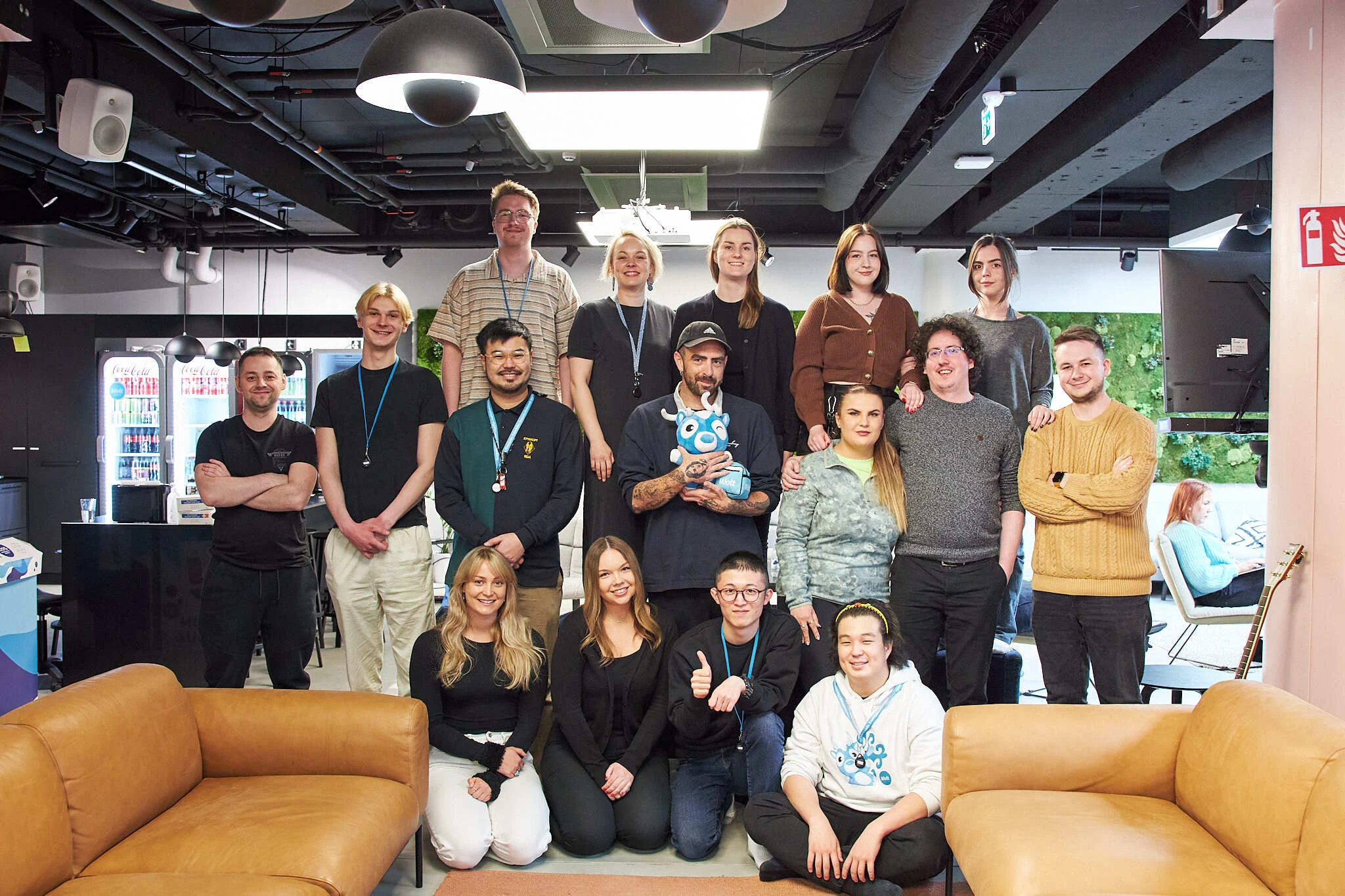
💡 Some fun things we do as a team:
Team emojis! We have 30,000 custom Slack emojis at Wolt 🤯, which says something about the culture. Custom emojis are a fun and effortless way to customize the virtual workspace, recognize achievements and spread good vibes within the team.
Start and end of day greetings to stay in touch. A small way in which we keep in touch are our good morning messages, which show when our team on different time zones wakes up for the day — it’s sort of a remote way of the casual morning chats you’d have in the office. We do a message at the end of the day as well.
Remote team activities: Although repetitive Zoom games can get old quickly, I feel our team has mastered the art of having fun remotely. Some of our team’s favorites have been a Kahoot quiz about our team members to get to know each other better, Skribbl and Gartic phone.
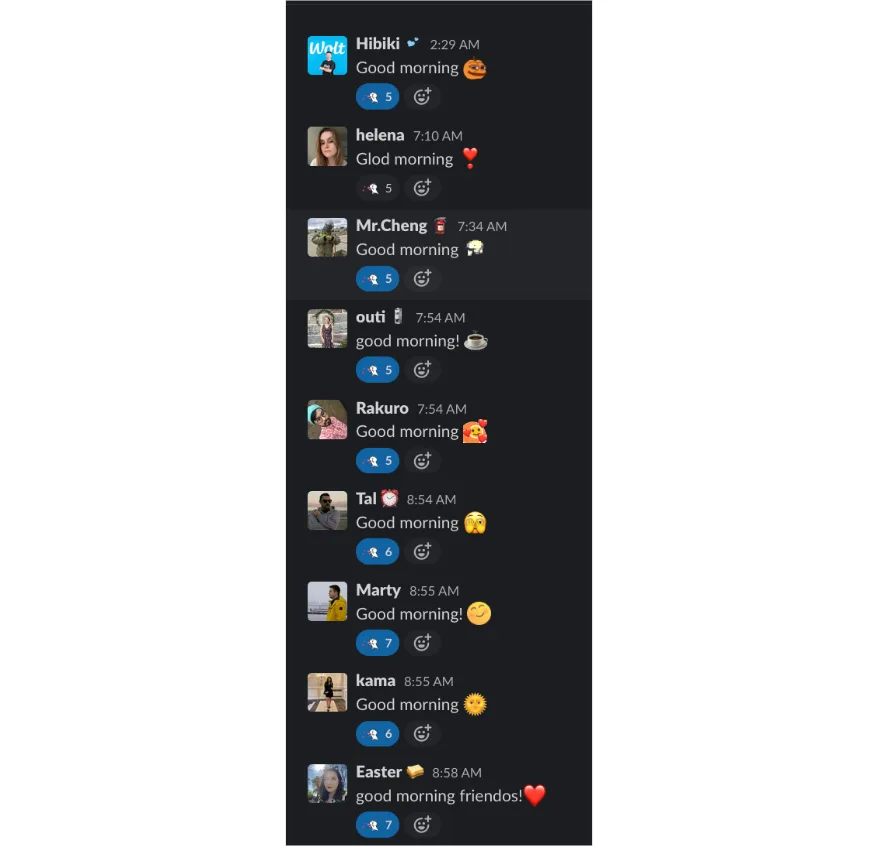
5. Take your breaks 🧘
In a remote set up it can be easy to forget to take any breaks from working. In fact, research shows that remote employees often feel guilty about taking breaks or even skip breaks and lunch altogether, which surely isn’t great! That’s why we’re making a conscious effort to normalize and encourage taking breaks.
💡 Things that have helped us:
We make use of Slack statuses when taking breaks to inform each other that we’re out for a while. This helps us to organize ourselves and ensure that someone is available without having to book breaks or making a fuss about it.
Using breaks for something we love helps productivity — taking the dog out, picking up a knitting project that needs finishing or just having your coffee outdoors for a bit can help to refresh your mind.
Leading by example — we all encourage each other to take time out so there’s no guilt about breaks.
6. Communicate, communicate, communicate! 📣
Communication is essential when you work within a remote-first team as there aren’t in-person daily chats you’d experience with an onsite role. We discuss a lot on our team Slack channel and use it as a casual, open place to chat about anything. It’s the place to raise stuff and helps us work together. Our internal team channel plays a pivotal role in how we shape our culture in the team.
Every week we have a team call where team leads gather topics for discussion from the previous week and discuss points on changes and updates. These updates include changes our team needs to know about, sharing best practices and guidance within the team.
We always make sure weekly call slides are shared with the team and use them as a basis to create an internal newsletter to ensure the right information reaches the whole team. Documentation is key when working remotely and we strive to keep all information accessible and clear.
💡 Things that have helped us:
We make sure it’s not all work and no play, the Slack channel is there for important work content but also cat memes or restaurants we’re trying during the weekend
Documenting our work leads to less mistakes or miscommunications and more transparency so we ensure everything is neatly documented and easy to find
To takeaway…
Leading a remote-first team takes you back to the basics and you need to spend effort to facilitate events, themes and connections that would occur naturally and rather effortlessly in an office environment.
While it can feel daunting to dedicate time and resources to orchestrating some of these everyday things it has most definitely been worth it for us. Remote-first setting allows you to form a diverse team with expertise from ends of the world and comes with great potential. Hybrid working is the future and it’s a great way to start adjusting by building remote-first teams. We believe in putting team members’ wellbeing first and giving them the freedom to choose between office work and home office.
Hope you enjoyed my tips and tricks on building happy, remote teams! 💙
